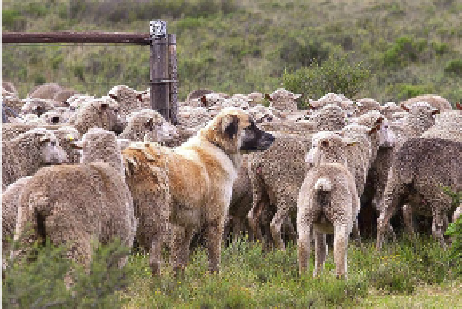Biology Reference
In-Depth Information
or livestock-guarding dogs or pets, first of all require little or no genetic
change from the village dog, but rather are results of their developmental
environment. The developmental environment may be consciously or
unconsciously provided by humans. Second, selection by culling puppies
can produce a marker for dogs which are managed for specific tasks.
Third, differences in behavior of emerging breeds can be created through
culling animals that misbehave or through reproductive isolation of super-
ior animals. Fourth, variation in foraging energetics results in local
adaptation.
Specific aspects of culling and reproductive isolation may or may not
be manipulated by humans. The developing symbiotic mutualism (recipro-
cal benefits to dogs and people) need not have been the result of any
genetic divergence of the village dogs, and our observations of Damara
tribe livestock-guarding dogs in Namibia reinforce
Black and Green's
(1985)
contention that any dog, especially “mongrels” (
Coppinger et al.,
1985
), can be a livestock guardian if the proper developmental recipe is
followed.
Small samples of dogs from various pastoralist societies have been col-
lected and registered with kennel clubs primarily in the U.S. and Europe.
These dogs are described by a breed standard by the people who create and
manage the kennel club. Thus we have breeds of livestock-guarding dogs
such as Great Pyrenees, Anatolian Shepherds, Sarplaninac, and so on,
which reflect the area of origin. They are historical representations of the
dogs that breeders envisioned were the “original” landrace dog. The ideal-
ized phenotypic standard tends to change in their “restricted environment”
because of capricious breeder preference for bigger dogs or uniform coat
color (
Drake and Klingenberg, 2007, 2010
) or by genetic drift, and founder
effects.
FIGURE 6.4
Landrace breed from the Maluti Mountains in Lesotho, Africa, used as livestock-
guarding dogs. Photo credit: Daniel Stewart




Search WWH ::

Custom Search